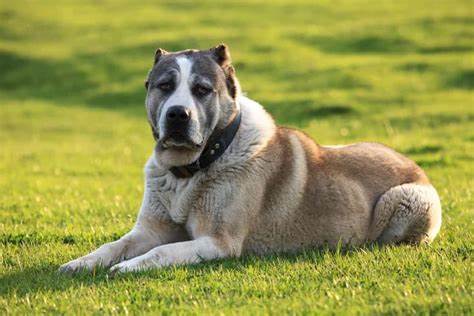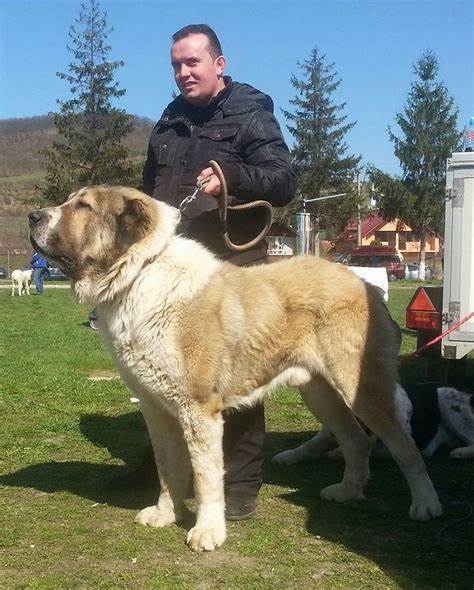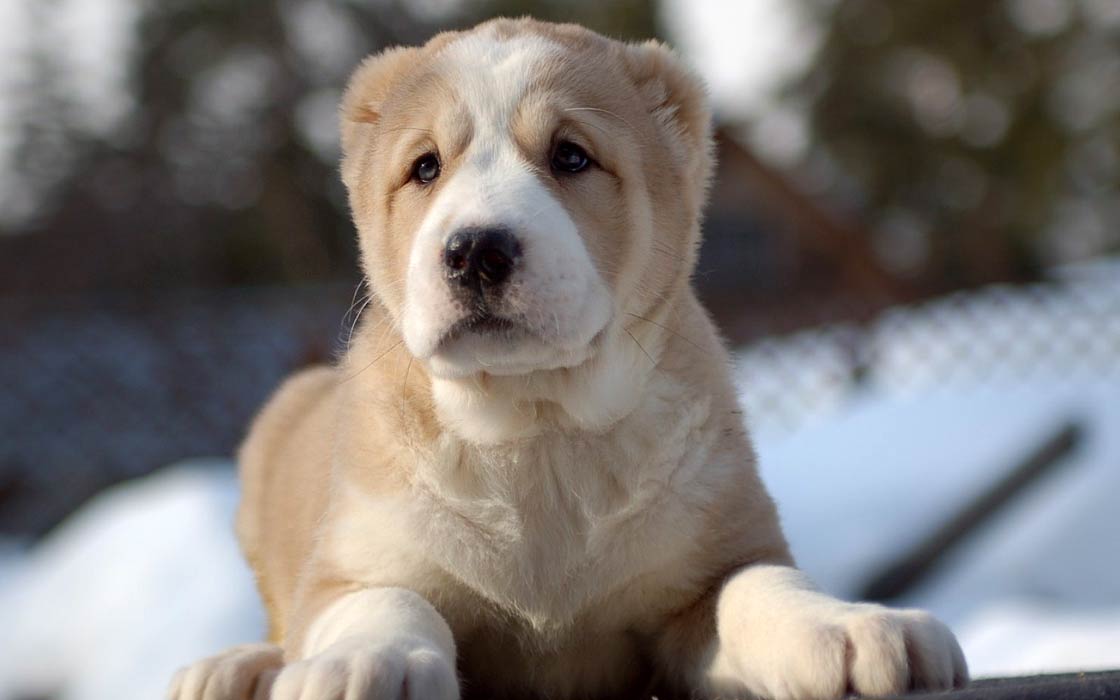
The Central Asian Shepherd Dog, also known as the Alabai, is an ancient and powerful livestock guardian breed with origins tracing back over 4,000 years. This dog developed naturally across a vast region encompassing Kazakhstan, Turkmenistan, Uzbekistan, Tajikistan, and surrounding areas, making it one of the oldest Molosser-type breeds in the world.
Bred by nomadic tribes to guard herds against predators like wolves, bears, and thieves, the Alabai was prized for its fearlessness, endurance, and independence. Unlike many modern breeds, it evolved through natural selection rather than selective breeding, resulting in remarkable hardiness and survival instinct.
Today, the breed is considered a national treasure in Turkmenistan, where it is honored with statues and celebrated for its cultural importance. It is recognized by the FCI (Fédération Cynologique Internationale) and is steadily gaining popularity in the West among experienced dog handlers.
The breed is widely admired in Central Asia and Eastern Europe and is increasingly sought after by ranchers, farmers, and property owners in North America and Europe for its unmatched guarding ability. While not common in urban settings, it’s revered in rural areas and among those who respect primitive guardian breeds.
The Central Asian Shepherd Dog is a giant, robust breed with an impressive and intimidating presence.
• Coat: Dense, double-layered, weather-resistant coat that can be short or medium in length.
• Colors:
o White, fawn, brindle, black, gray, or piebald—solid or with markings.
• Size:
o Height: 25–32 inches (65–81 cm).
o Weight: 88–175 lbs (40–80 kg), with males typically larger.
• Head & Expression: Broad, strong head with a pronounced stop and heavy muzzle.
• Ears: Traditionally cropped in some regions; natural ears are medium and pendant.
• Tail: Long and thick, sometimes docked; carried low or curled when alert.
• Body: Large-boned, powerful, and muscular, built for endurance and brute strength.
The Alabai is known for its independence, calm demeanor, and strong territorial instincts.
• Fearless Protector: Naturally defends livestock, property, and family.
• Independent Thinker: Can assess situations and make decisions without human instruction.
• Loyal but Reserved: Deeply loyal to its owner, but not overly affectionate or needy.
• Quiet and Observant: Not a big barker—prefers to act rather than make noise.
• Low Prey Drive but High Guarding Instinct: Not inclined to chase but extremely territorial.

This breed is a top choice for those seeking a serious, independent, and reliable guardian dog.
• Ideal for Rural and Agricultural Environments: Excels at guarding flocks and large estates.
• Minimal Grooming Needs: Despite their thick coats, they are relatively low-maintenance.
• Unshakable Confidence: Stands its ground in the face of danger—a true deterrent to intruders.
• Culturally Significant: A breed steeped in tradition and natural strength.
• Hardy and Adaptable: Thrives in harsh climates, from freezing cold to dry desert heat.
The Alabai needs strong leadership, space, and purpose to thrive.
• Training:
o Requires firm, consistent handling—not suited for first-time owners.
o Should be socialized early and extensively to avoid overprotectiveness.
• Exercise:
o Needs daily walks and room to patrol, but doesn’t require high-energy workouts.
o Prefers open spaces over confined environments.
• Grooming:
o Brush once or twice a week; more during seasonal shedding.
o Bathe only as needed.
• Nutrition:
o Feed a high-quality diet appropriate for giant breeds.
o Monitor weight to avoid joint stress or obesity.
• Companionship:
o Bonds closely with its family but is content to spend time outdoors as a working dog.
The breed is naturally healthy due to centuries of evolution, but may still face:
• Hip and Elbow Dysplasia
• Bloat (Gastric Torsion)
• Joint Issues in Seniors
• Obesity (if overfed or under-exercised)
• Heart conditions (less common but possible in large breeds)
Routine veterinary care and responsible breeding help reduce health risks.

Compared to the Caucasian Shepherd Dog, the Alabai is often less aggressive but equally confident. It’s more athletic and nimble than the Tibetan Mastiff, and generally more independent than the Great Pyrenees.
It shares similarities with the Kangal but is bulkier, more reserved, and less likely to seek human affection.
The Alabai is perfect for experienced dog owners with large properties or working farms, especially those needing a self-sufficient and commanding protector. If you value autonomy, tradition, and strength in a dog, the Central Asian Shepherd will not disappoint.
However, if you're looking for a social, easy-to-train, or apartment-friendly pet, this breed will not be a suitable match.
United Pet Club can help you find and prepare for your Central Asian Shepherd companion. Whether you're searching for trusted breeders or adoption resources, we offer everything you need to get started.
Visit our platform to explore the Alabai’s history, traits, and care, and let us help you connect with this ancient and noble guardian.